Technologies that realize
Art line image quality in a zoom lens

FLD glass, SLD glass, and high-refractive index,
high-dispersion glass help minimize aberrations
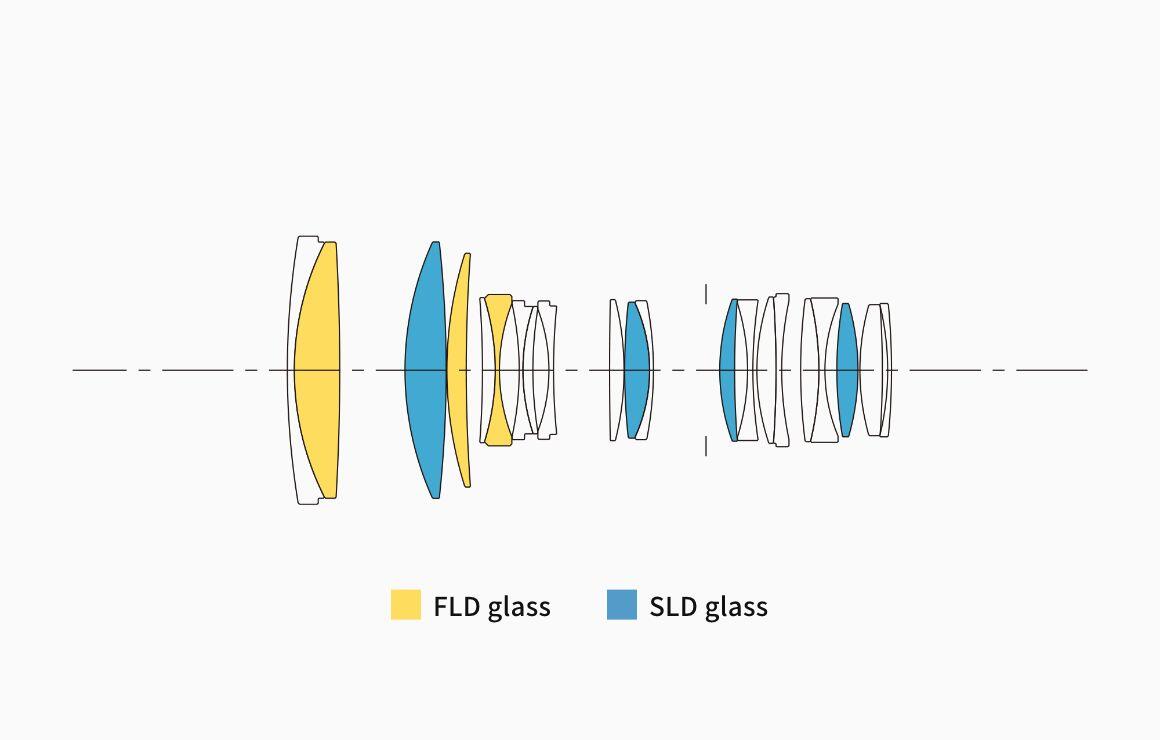
To help minimize axial and transverse chromatic aberration, this lens features an optimal arrangement of three FLD (“F” Low Dispersion) glass
elements, one SLD (Special Low Dispersion) glass element, three high-refractive index SLD glass elements, and one high-refractive index, high-dispersion glass element. By including one or more low-dispersion element in every element group, this lens ensures outstanding image quality throughout the zoom and focal range.
Featuring a newly designed
Hyper Sonic Motor
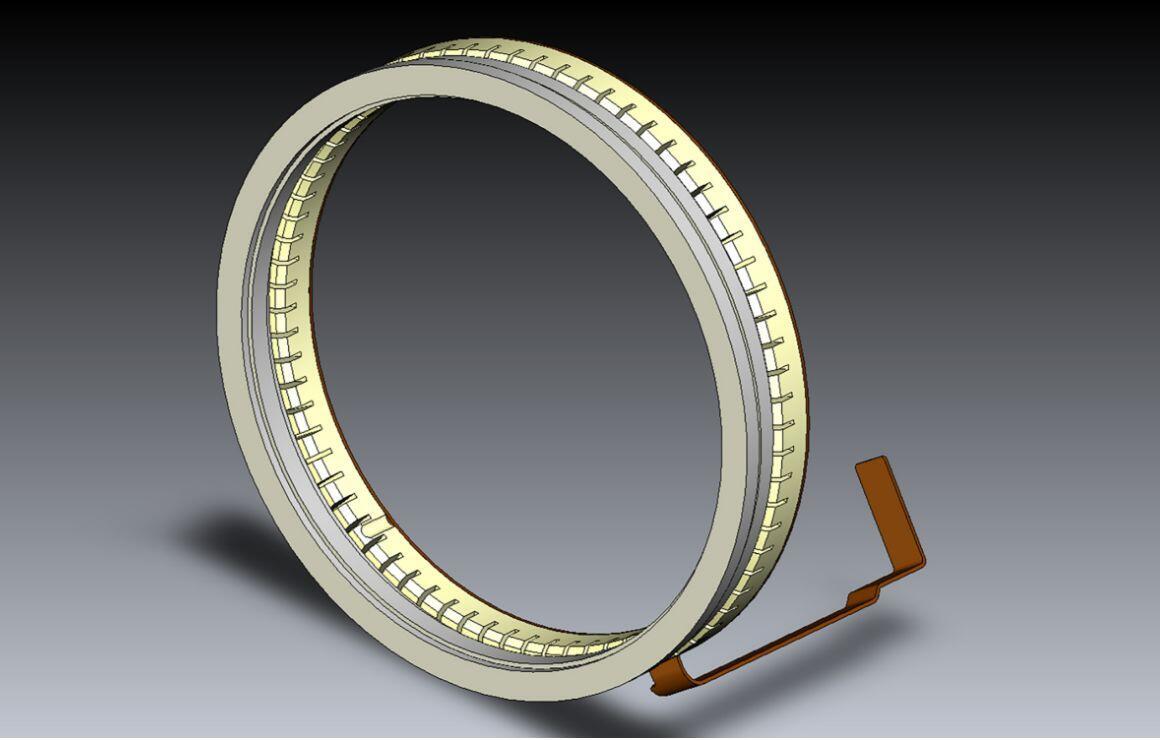
To achieve outstanding image quality and F1.8 brightness, SIGMA has enhanced its Hyper Sonic Motor (HSM). Optimizing the layout as well as the shapes of the individual parts, SIGMA has made the HSM 30 percent slimmer than before. In turn, this slimmer HSM has made possible the combination of F1.8 brightness and high image quality in a zoom lens. As with the previous SIGMA HSM, at any time during AF, users may access MF simply by rotating the focus ring. This feature makes faster focus adjustment possible, since there is no need to use the AF/MF focus mode switch. Also, the optional SIGMA USB DOCK allows the user to set the lens to conventional full-time manual focus override.
Note: The operation of full-time MF may vary based on mount type.
Diaphragm unit designed for smooth operation
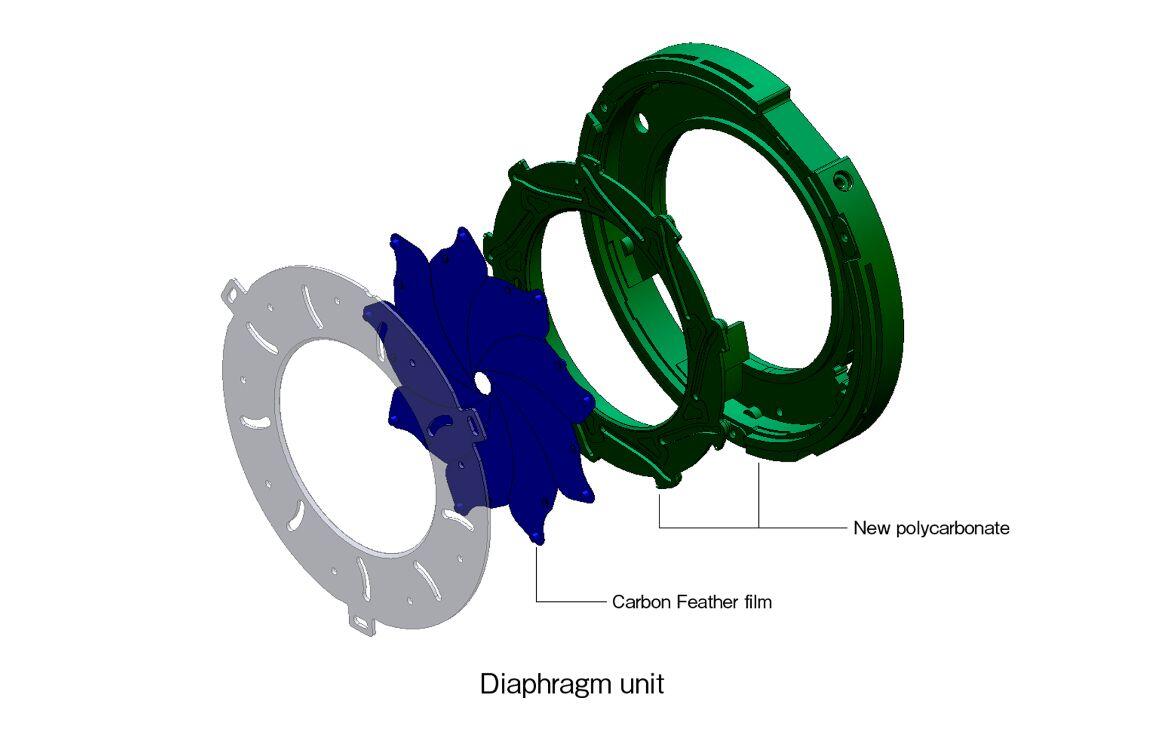
The diameter of the diaphragm is the second-largest in the SIGMA lens lineup after that of the SIGMA 200-500mm F2.8 /400-1000mm F5.6 EX DG, necessitating smoother and quicker operation than ever before. To achieve this goal, the diaphragm blades feature Carbon Feather film, and the diaphragm unit features a new polycarbonate made with fluorine. Thanks to these innovations, diaphragm operation is exceptionally smooth even during continuous shooting, while the new polycarbonate is exceptionally durable and wear-resistant.
Designed to minimize flare and ghosting

From the start of the design process, SIGMA measured flare and ghosting to establish an optical design that is resistant to strong incidental light sources such as backlight. At the prototyping stage, SIGMA used not only simulations but actual photographic experiments to assess flare and ghosting under multiple criteria, identify the causes of these issues under a wide range of situations, and take measures to mitigate them. In addition, SIGMA’s Super Multi-Layer Coating helps further reduce flare and ghosting and provide sharp, high-contrast images even in backlit conditions.
Read More
Outstanding zoom lens maneuverability
Realizing the style of operation the same
with the SIGMA 18-35mm F1.8 DC HSM | Art.

Inner focus and inner zoom
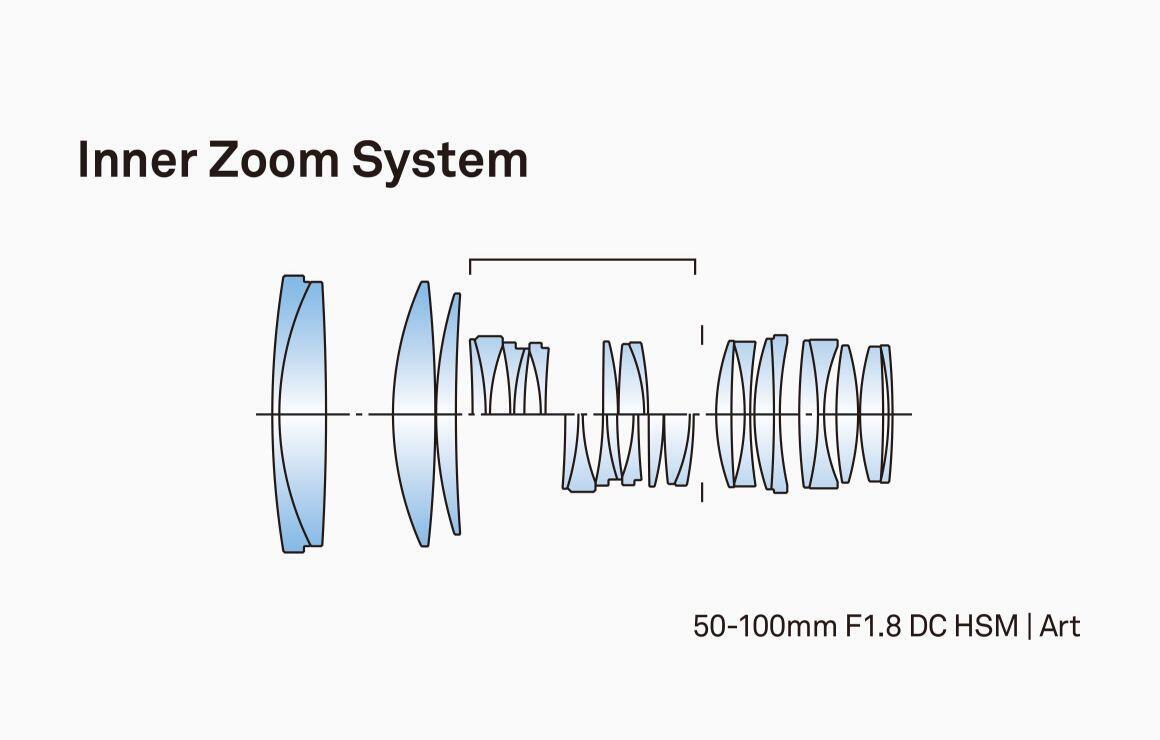
Since its release, the SIGMA 18-35mm F1.8 DC HSM | Art has been widely used for videography. Understanding that the SIGMA 18-35mm F1.8 DC HSM | Art and new SIGMA 50-100mm F1.8 DC HSM | Art will often be used together, SIGMA has made the style of operation the same for both lenses, including the feel of focusing and zooming. Thanks to SIGMA’s inner focus and inner zoom technologies, adjusting the focus and zoom rings does not change the length of the lens, and turning the zoom ring is not prone to cause focus shift.
Tripod socket designed for stable, comfortable operation
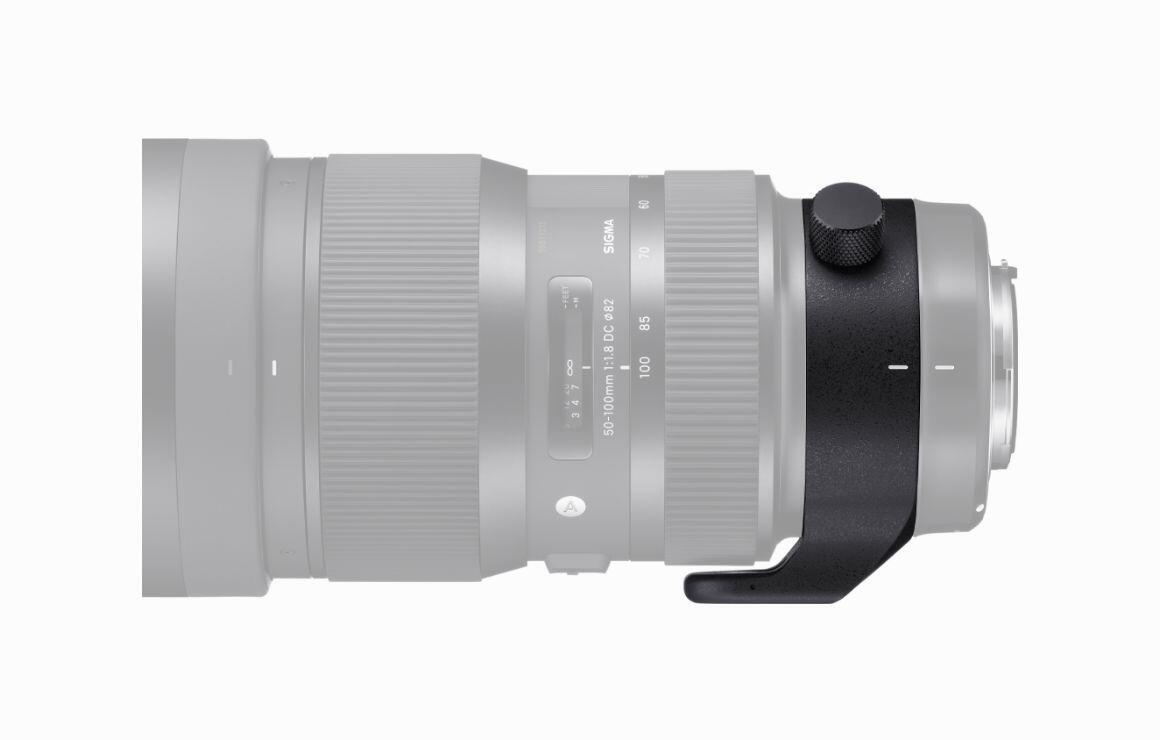
The tripod socket is compact, making operation more stable and comfortable during handheld photography. Parts with electro-less nickel plating help ensure the quality and durability of the 90-degree click stops and smooth switching between the horizontal and vertical position. The shape of the socket also enhances ease of handling and carrying when the lens is not attached to a camera.
Exclusive low-dispersion glass

The degree to which light is refracted by glass depends on the light’s wavelength. This fact causes different colors of light to focus at slightly different points. The result is chromatic aberration, the color fringing that is particularly noticeable in telephoto lenses. Most chromatic aberration can be removed by combining a high-refractivity convex lens element with a low-refractivity concave element. Yet residual chromatic aberration known as “secondary spectrum” may still remain. To minimize this secondary spectrum, which can be a serious issue with conventional lenses, SIGMA lenses feature up to three types of exclusive low-dispersion glass offering superior performance: ELD (Extraordinary Low Dispersion), SLD (Special Low Dispersion) and FLD (“F” Low Dispersion). In particular, FLD glass offers ultra-low dispersion in combination with high transmittance and the anomalous dispersion characteristics of fluorite. Meticulous deployment of these types of exclusive low-dispersion glass and optimization of power distribution gives SIGMA lenses superlative image rendition undiminished by residual chromatic aberration.
The Design Concept
In our new product lines, the lens caps and AF/MF switches are newly designed to improve usability. To ensure precise operation, internal parts feature generous use of metal and TSC (Thermally Stable Composite), which is highly compatible with metal parts. The lens barrel is engraved with the year of release for instant access to this information.
Rounded diaphragm

The 9-blade rounded diaphragm creates an attractive blur in the out-of-focus areas of the image.
High-precision, rugged brass bayonet mount
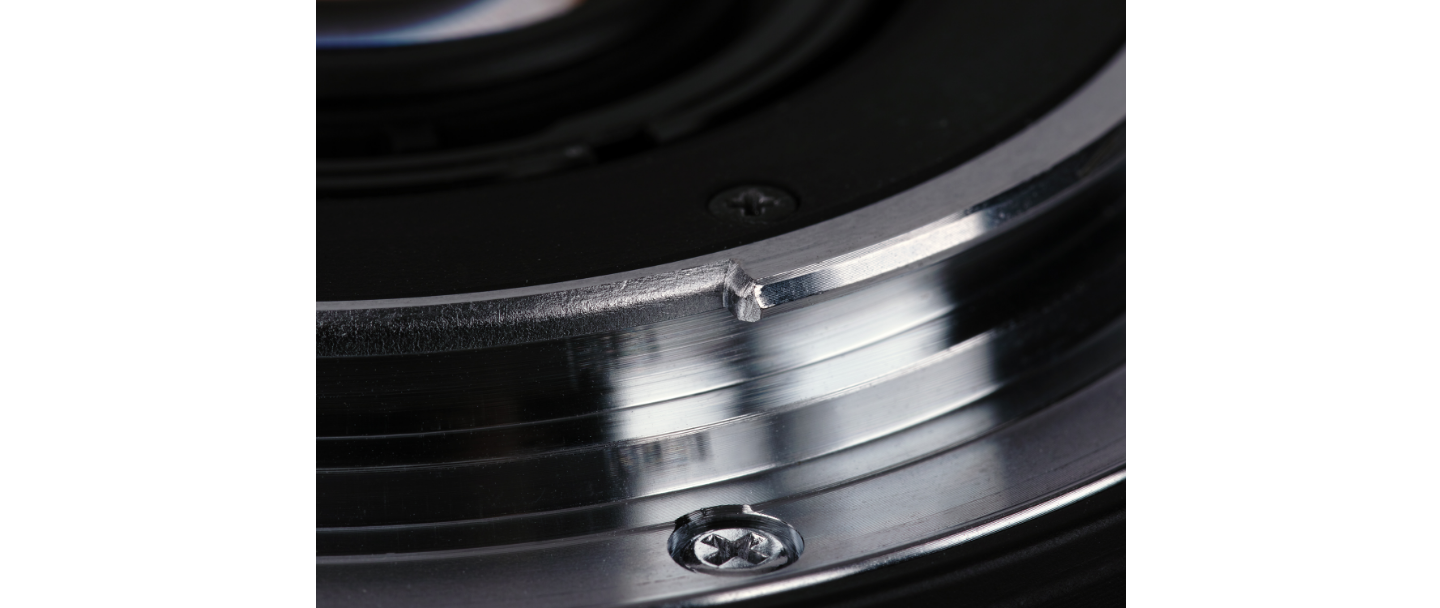
The brass mount combines high precision with rugged construction. Its treated surfaces and enhanced strength contribute to the exceptional durability of the lens.
Read More